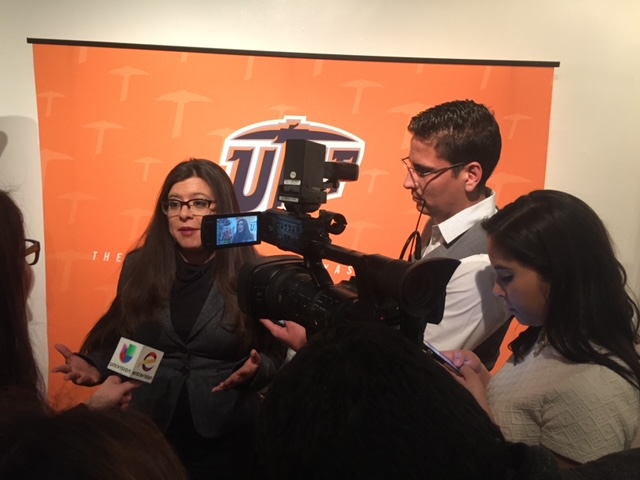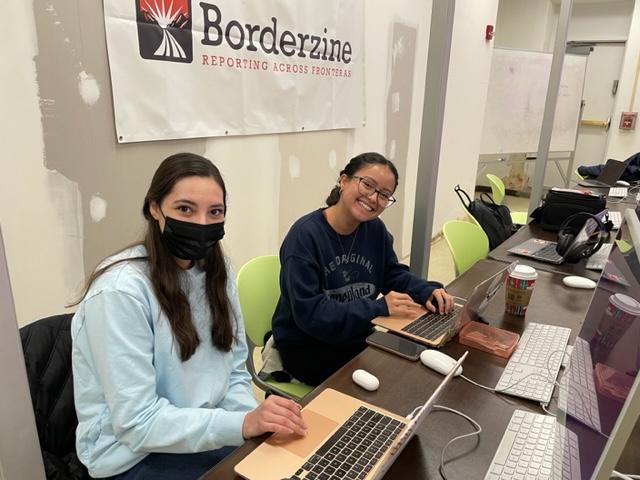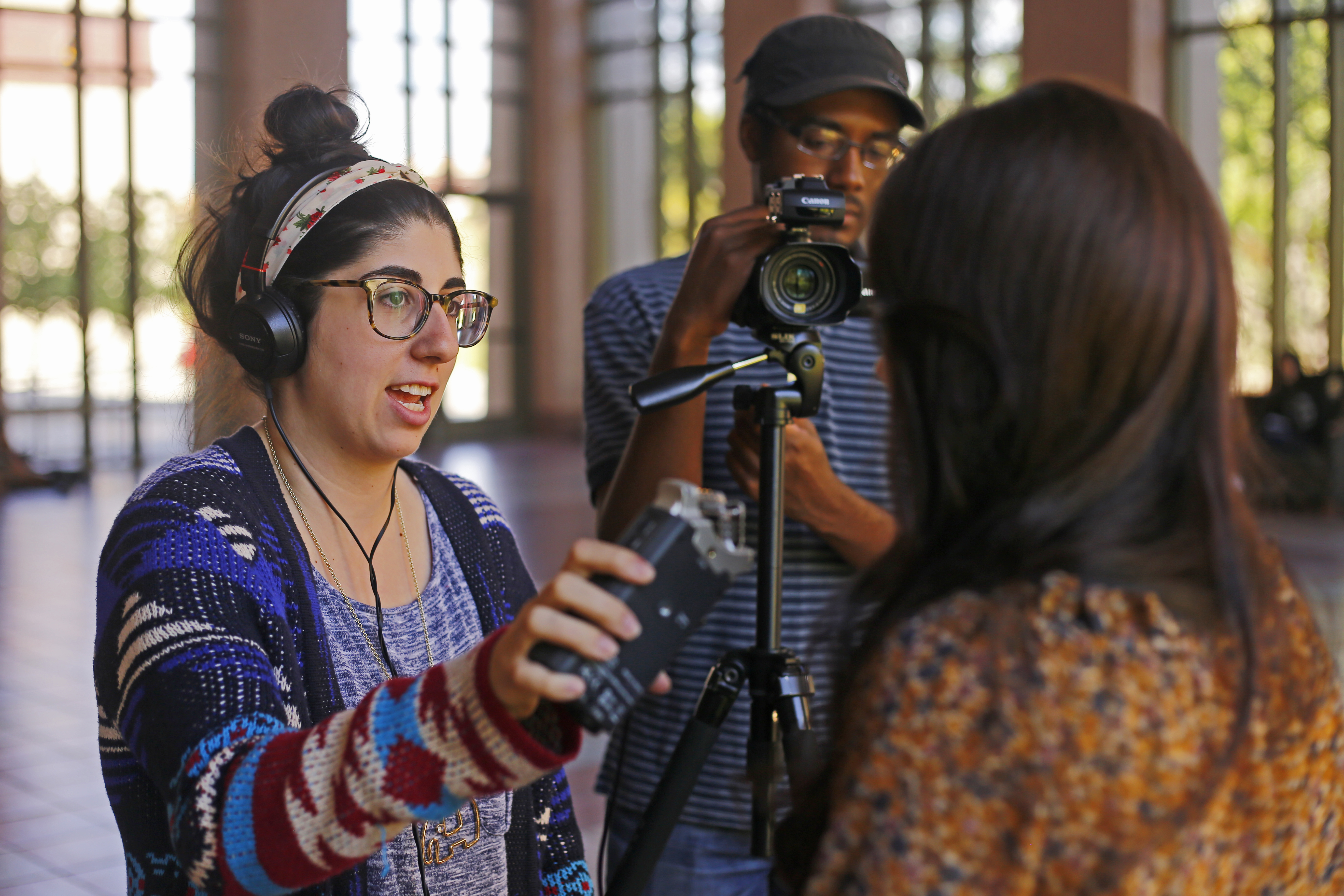By Lauren Milideo
Along the U.S.-Mexico border of western Texas, residents regularly cross back and forth, shopping, learning, working, switching between English and Spanish. It looks like everyday life in many communities – but it’s also an entirely unique place, never far from the national spotlight. For 15 years, the students of the University of Texas at El Paso have told the stories of this region and its people in Borderzine.
“Our focus is on covering border life – primarily looking at the border from the point of view of people who live here versus the narrative that gets pushed on us a lot from the outside,” said Borderzine director and associate professor of practice in journalism Kate Gannon, who worked in newspapers for a couple of decades before joined UTEP. Her co-editor, Angela Kocherga, has worked in television and radio journalism, and is currently news director of public radio affiliate KTEP, based at UTEP.
The students who produce Borderzine’s content are living it as well. “We have students who live in El Paso,” Gannon said. “We have students who live in Juarez, Mexico.”
The site has offered this reporting for almost 15 years. “Borderzine was created in December 2008 with a seed grant from the Ford Foundation ($35,000) and a three-year operating grant from the Knight Foundation ($419,000),” Gannon said. “UTEP also provides ongoing support for faculty, some equipment, and lab space.”
Fundraising is an ongoing effort; Borderzine has received money through the Institute for Nonprofit News’ News Match campaign, an open collaborative fund coordinated by INN, wherein the Institute matches funds raised by Borderzine.

“The idea is to give students experience working with professional editors in a professional environment, and also to build their portfolio,” Gannon said. “They can use it to showcase themselves for internships or for jobs… now, a lot of a lot of media jobs are expecting students to come in with some sort of experience.”
Gannon noted that this is especially important given that shrinking newsrooms often cannot offer internships, and UTEP is already in a remote location, far from big cities with multiple media outlets.
“It was a good experience,” said program alum Maria Ramos Pacheco, who is now a reporter covering local government at the Dallas Morning News. She noted that in classes leading up to Borderzine, she’d learned the theories and rules of journalism, “but when you get into Borderzine, you actually get to write a story, and to publish, and to understand how you should put your stories on social media, how to present them.”
Many students are bilingual in English and Spanish, Gannon said, though this is not a requirement for the course. Stories may be produced in either language, and students often translate stories, Gannon noted. The option to work in both languages allows students to showcase their fluency, leading to additional professional opportunities.
Ramos Pacheco noted the importance of “having the support of professors who were fluent in both languages to be able to edit, to talk to me, to understand the needs of having bicultural and bilingual content, because we are on the border.”
In addition to students’ work, Borderzine also publishes stories submitted by collaborative partners. And two years into its production, the outlet launched another program with the Dow Jones News Fund. This program provides multimedia training to professors from Hispanic-serving institutions.
More recently, Gannon said, the program has expanded to work with historically Black colleges and universities (HBCUs) as well. These partner schools’ students’ work also appears in Borderzine when its focus meets the interest of the outlet’s audience. Most recently, a piece appeared in both English and Spanish about the Chicago Latine Theater Festival, written by a student at Chicago’s Columbia College.
The Borderzine site receives about 30,000 unique views per month, Gannon noted.
 Student journalists’ work can also appear through the Puente News Collaborative, which is a Microsoft-funded project “to increase and amplify local journalism,” Gannon explained. Outlets in the Collaborative include Juarez news site La Verdad, El Paso ABC affiliate KVIA, business magazine El Paso Inc., digital media outlet El Paso Matters, daily El Paso Times, Univision and local NPR affiliate KTEP.
Student journalists’ work can also appear through the Puente News Collaborative, which is a Microsoft-funded project “to increase and amplify local journalism,” Gannon explained. Outlets in the Collaborative include Juarez news site La Verdad, El Paso ABC affiliate KVIA, business magazine El Paso Inc., digital media outlet El Paso Matters, daily El Paso Times, Univision and local NPR affiliate KTEP.
The experience was helpful in this regard, noted Ramos Pacheco, whose work appeared in El Paso Matters as well as Borderzine. The experience “got me more set for joining a newsroom when it was time to graduate… [I had] ‘real world,’ quote-unquote, experience.”
Another avenue for student journalists to share their work is the Texas Newsroom, which is a collaborative of public radio stations across the state. The Texas Newsroom, through daily news show Texas Standard at station KUT, is also offering an internship this year, with a UTEP student reporting stories from the El Paso border region. Their work can then be picked up by any of these other stations as well, Gannon noted.
“It's a good opportunity to be covering a few more things out of the border,” Gannon said. “We are so far from the rest of Texas that a lot of times our stories aren't told. So, this is great. It just expands our voice.”
Borderzine, too, fundraises and offers stipends for three to four students, selected after a competitive application process, to pursue other internships, either in El Paso ($1,500) or elsewhere ($3,000).
Going forward, Gannon said, she hopes to obtain grant money to further build out the multimedia lab. And she plans to put funds from Microsoft Funding Collaborative toward establishing a “talent bureau,” through which students could freelance on one-time television and radio gigs requested by local outlets as part of the Puente News Collaborative.
In the meantime, students are leaving Borderzine and stepping into journalism careers in English, Spanish or both.
“I think Borderzine… is a good way to show that you need bilingual information, accurate information,” Ramos Pacheco said.
“And it also shows, when you're a student, that it's important, that you should be creating these spaces for writing in Spanish as well.” She added, “I think it was very helpful and empowering for my professors to push, [to say]… you should write it in Spanish because that’s the story that is needed.”

